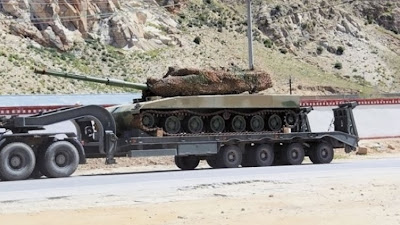The People's Liberation Army (PLA) has started to field a new light tank armed with a 105 mm gun.The new tank will replace the PLA's Type 62 and Type 63 light tanks. Its estimated weight of around 30 tonnes could give it significant export potential given that main battle tanks (MBTs) are often too heavy for road networks and bridges.
The light tank will also give the PLA operational flexibility inside China. The PLA's latest Type 99 series MBT weigh at least 50 tonnes, which, coupled with their overall size, makes them difficult to deploy to some parts of the country.
The light tank, which may have the designation of the Type 99A2 (which, confusingly, is also the designation of the latest version of the Type 99 MBT), is of conventional layout with the driver at the front, turret and fighting compartment in the centre, and the diesel power pack at the rear.
Main armament comprises a stabilised 105 mm rifled gun fitted with a fume extractor and thermal sleeve with a 7.62 mm co-axial machine gun.
 |
| China's New Light Tank |
In addition to firing conventional natures of 105 mm ammunition, including the latest BTA2 armour-piercing fin-stabilised discarding sabot round, it can also probably fire the GP2 105 mm laser-guided missile, which has a maximum range of 5,000 m and is fitted with a tandem high-explosive anti-tank (HEAT) warhead.
The hull and turret appear to be of all welded steel armour construction with the upper part of the suspension covered by a skirt in some photographs.
Explosive reactive armour is fitted to the front and sides of the turret to provide a higher level of protection against weapons fitted with a HEAT warhead. The flat hull sides would make it easy to fit additional armour if required.
Suspension consists of six road wheels with an idler at the front and drive sprocket at the rear, and three track return rollers. It is probable that the suspension is of the hydropneumatic type, which allows the driver to adjust the ground clearance to suite the terrain.




No comments:
Post a Comment